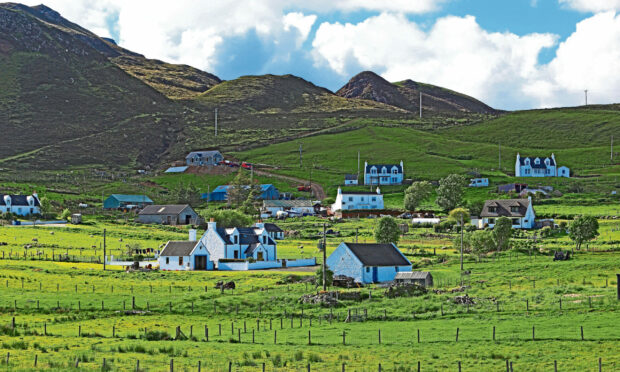Renting out surplus properties has until now been the most common source of diversified income for Scotland’s farmers.
As the workforce has diminished, cottages and farmhouses have been freed up to become part of the wider rural housing stock.
That is all at risk now, however, according to rural business organisation Scottish Land & Estates (SLE).
Legislation passed on Thursday October 6 at Holyrood will lead to an emergency rent freeze and an eviction moratorium on the private rented sector.
The Scottish Government introduced the measures as a means of protecting tenants from rent increases during the cost-of-living crisis, but SLE believes long-term unintended consequences will be felt for decades to come.
The organisation also believes it will lead to a dramatic reduction in the private rented sector in rural Scotland. It will make alternative uses such as holiday lets more attractive, although operators are now having to meet licensing costs. In some cases properties may be left empty.
Balancing rights of tenants and landlords
Sarah-Jane Laing, chief executive of Scottish Land & Estates, said: “The rights of landlords and the rights of tenants need to be properly balanced to ensure all parties have confidence in the tenancy system. Sadly, the Bill passed in parliament last week is yet another seismic shift from that balance.
“There is a scarcity of housing available for rent in many areas already, with a huge demand for any available property. This is coupled with regulations such as energy efficiency legislation for tenanted properties, which is costing huge sums of money, especially in rural areas and is leading to huge costs for property owners or the choice for landlords to leave the sector altogether.
🏘️ This legislation will exacerbate the chronic shortage of housing in Scotland – to the detriment of the rural economy and communities.”
Read why we, and others, are seeking legal opinion on the latest ill-conceived Scottish housing legislation
🔎 https://t.co/pc0kbx5See pic.twitter.com/D5Pkqj9nr0
— ScottishLand&Estates (@ScotLandEstates) October 12, 2022
“Whilst never perfect, even relatively recently we had a well-functioning private rented sector that, in most cases, worked for tenants and landlords.
“Indeed, the Scottish Government published its Scottish Household Survey 2020, which showed 94% of households in the private rented sector were very or fairly satisfied.
“We do not share the Scottish Government’s views that interests of tenants and landlords are balanced within this emergency legislation. More properties are likely to be withdrawn from the market in the short and medium term and tenants will lose out as choice diminishes.”
‘Deep flaws’ in Scotland’s housing system
Shelter Scotland assistant director Gordon MacRae said: “We welcome the emergency legislation passed by the Scottish Parliament last week. We don’t think it’s perfect, but it will stop people from becoming homeless this winter and protect vulnerable tenants as the cost-of-living crisis continues to bite.
“However, there are also many deep flaws in Scotland’s housing system that this Bill cannot address. Decades of under-investment in social housing, both rural and urban, has helped create a housing emergency which is gripping Scotland. That’s why Shelter Scotland has urged the Scottish Government to urgently reverse that decline and commit to building or buying another 38,500 social homes by 2026.”











Conversation